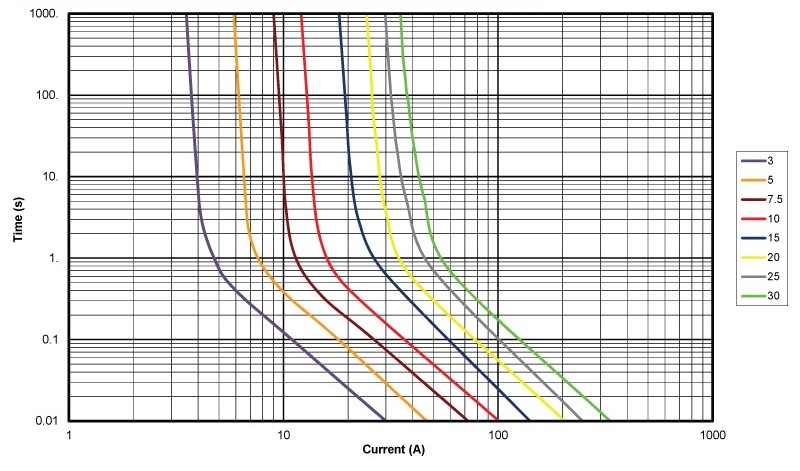SPRY345B february 2022 – april 2023 DP83TG720R-Q1 , DP83TG720S-Q1 , TCAN1043A-Q1
- At a glance
- Authors
- Introduction
- Overcoming E/E architecture challenges
- Power distribution challenges and solutions
- Decentralization of power distribution
- Replacing melting fuses with semiconductor fuses
- Smart sensor and actuator challenges and solutions
- Zonal modules –new microcontroller requirements
- Smart sensors and actuators
- Data challenges and solutions
- Types of data
- Time sensitivity of data
- Communication security
- Conclusion
Replacing melting fuses with semiconductor fuses
A standard melting fuse interrupts the flow of current by melting for large currents. The TCC curves shown in Figure 4 characterize this melting behavior.
 Figure 4 TCC curves of Littlefuse
microfuses.
Figure 4 TCC curves of Littlefuse
microfuses. Many factors influence fuse characteristics, such as contact resistance, air temperature and current transients. Because of these factors, system designers derate a fuse’s nominal melting point I2t (Ampere squared seconds) rating based on the nominal operating current, operating temperature range, inrush currents and current transient shapes. For example, derating the nominal current rating of the fuse by 25% may prevent the fuse from experiencing nuisance blowing.
The selection of fuse-based derated currents implies that the currents in the harness varies depending on the temperature conditions at the fuse. Harness designers may have to select less-optimal harness gauges in order to pass higher currents allowed by the fuse under certain temperature conditions.
One idea to further optimize harness wires is to use semiconductor high-side switch integrated circuits (ICs) with I2t characteristics. A typical high-side switch includes overcurrent protection; that is, when the current exceeds a certain threshold, the high-side switch either clamps the current or opens itself, thus protecting the downstream wire harness and load. By adding an I2t feature to the high-side switch, the switch opens at varying times depending on the current (or more specifically, the current squared) flowing through. Using I2t-based semiconductor high-side switches leads to less variation in fuse characteristics, which leads to more optimized wire harness gauges, which helps further lighten the weight of the harness.